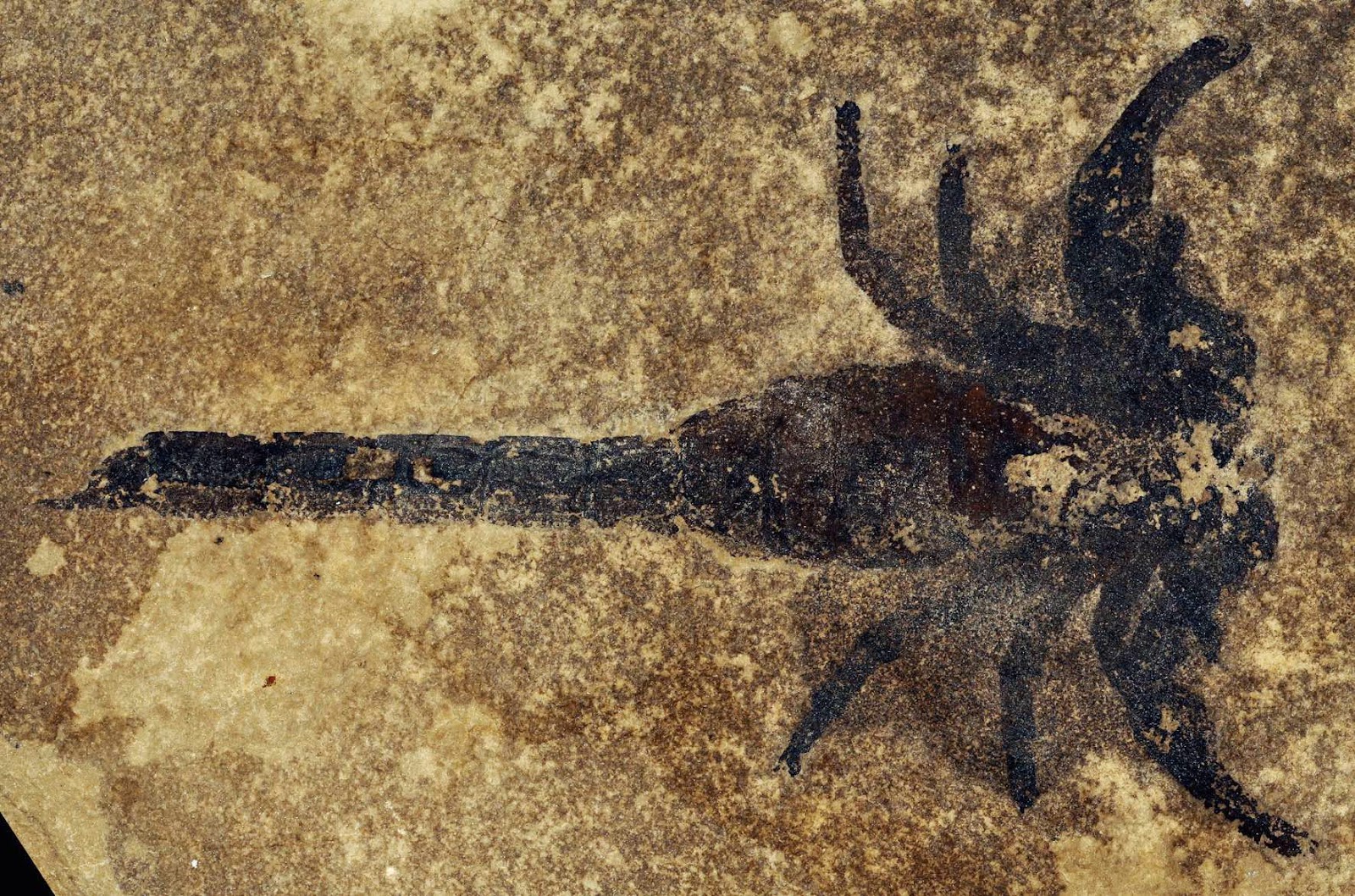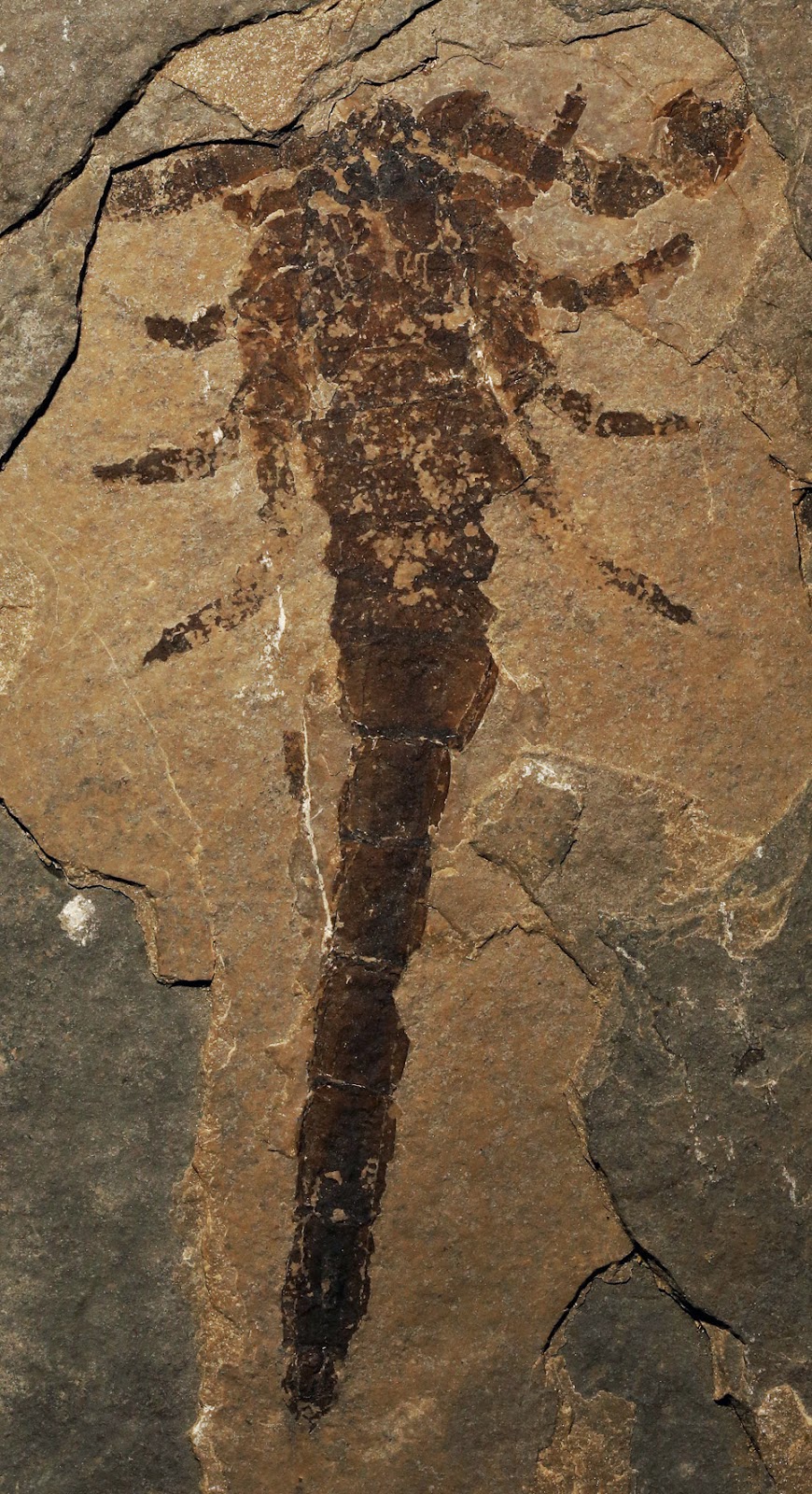
New research on extraordinarily complete and well-preserved fossil aquatic scorpions from the 430 million year old Eramosa Formation Konservat-Lagerstätte in Ontario demonstrates that a key prerequisite for living on land – the ability to walk unsupported by water – appeared surprisingly early in the fossil record. The findings, co-authored by the ROM’s Janet Waddington and David Rudkin, and the Museum für Naturkunde’s Jason Dunlop, will be published online 14 January 2015 GMT/Tuesday 13 January EST in the Royal Society journal Biology Letters.

Assigned to the species Eramoscorpius brucensis, these new Ontario specimens are the oldest known scorpions from North America and among the oldest in the world. Their legs, intriguingly similar to those of a modern scorpion, end in a short foot that could have been placed flat on the ground, providing a weight-bearing surface which, combined with the legs’ sturdy attachment to the body, would have allowed the animal to support its own weight without the buoyancy of water. The presence of other fossils of animals that lived only in the sea indicates that these new scorpions must have spent most of their time under water; however the fossils occur on rock surfaces that show ripples suggestive of brief exposure to air. The scorpions are preserved in a splayed posture suggesting that they represent empty moulted exoskeletons rather than carcasses of an animal that died. A possible explanation is that the scorpions took advantage of this leg structure to venture briefly into a temporarily exposed area in order to moult, where they would be safe from predators such as large eurypterids and cephalopods, and then returned to deeper water.
The fossil scorpions range in size from about 29 to 165 mm long, representing several different age classes.
The specimens all originated from the Bruce Peninsula and came to the ROM in a variety of ways: one was found in a quarry spoil heap by a young fossil hunter, others were spotted by quarry workers, and several other were discovered in quarried stone delivered to landscaping projects far from their origin.
“This extraordinary find contributes to our understanding of how scorpions moved from the sea onto land,” says Janet Waddington, Departmental Associate in the ROM’s Department of Natural History. “It is the enthusiasm and generosity of amateur fossil collectors that allows us to study and publish these findings, which are vital to the ROM’s collections and research.”
Reference :
A new mid-Silurian aquatic scorpion—one step closer to land? Biology Letters, Published 14 January 2015. DOI: 10.1098/rsbl.2014.0815
Note : The above story is based on materials provided by Royal Ontario Museum.










